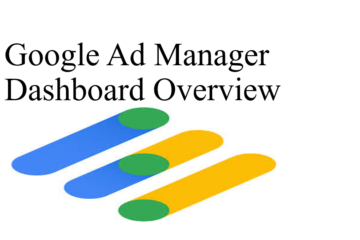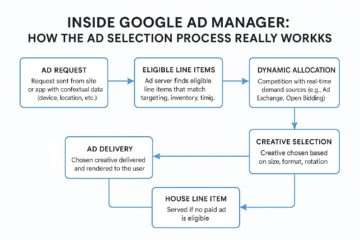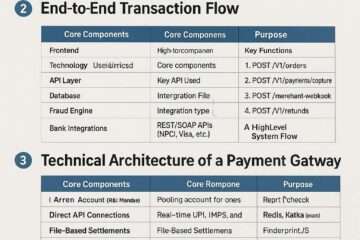

Key Points
- DV 360 is a digital advertising platform by Google for managing campaigns across display, video, TV, and audio, with advanced targeting and automated bidding features.
- Setting up a campaign involves creating an account, advertiser, campaign, insertion orders, line items, and uploading creatives, with a structured hierarchy for organization.
- Important questions for setup include defining the target audience, setting objectives, choosing creatives, selecting bidding strategies, managing budgets, and using analytics for optimization.
- Research suggests effective audience targeting uses first-party and third-party data, while bidding strategies can be automated or customized based on goals, with ongoing monitoring for adjustments.
Introduction to DV 360
DV 360, or Display & Video 360, is Google’s advanced digital advertising platform designed for end-to-end campaign management. It allows businesses to plan, execute, and optimize ads across multiple channels, including display, video, TV, and audio. With access to over 80 ad exchange networks and coverage of more than 90% of the internet, it offers extensive reach and precise targeting capabilities. Key features include integrated modules for campaigns, audiences, creatives, inventory, and insights, as well as automated bidding powered by machine learning.
Campaign Setup Process
Setting up a campaign in DV 360 follows a structured hierarchy:
- Account (Partner): The top level, managing all advertisers with admin features like billing.
- Advertiser: Represents a business or brand, housing campaigns and creatives.
- Campaign: Groups related insertion orders with common goals, setting default targeting.
- Insertion Order (IO): Manages budget, flight dates, and frequency caps for line items.
- Line Item (LI): Defines specific ad placements with targeting and bidding strategies.
- Ad Group: Used for YouTube line items, similar to line items.
- Ad/Creative: The actual ad content displayed to the audience.
The process involves:
- Creating an account and setting up an advertiser.
- Creating a campaign with name, dates, and targeting.
- Setting up insertion orders with budgets and dates.
- Creating line items with specific targeting and bidding.
- Uploading and assigning creatives to line items.
Important Questions for Setup and Optimization
Consider these questions to ensure effective campaign management:
- Target Audience: How will you define and reach your audience using first-party data (e.g., customer lists) and third-party data for broader reach?
- Objectives: What are your goals (e.g., brand awareness, conversions), and how will you measure success with metrics like click-through rates or conversions?
- Creatives: What types (display, video) will you use, and how will you ensure effectiveness through testing and optimization?
- Bidding Strategies: Will you use automated strategies for maximizing clicks or custom bidding for specific goals, and how will you monitor and adjust?
- Budget Management: How will you allocate and pace budgets, using DV 360’s optimization features for automatic adjustments?
- Analytics: What reporting tools will you use to track performance and make data-driven optimizations?
Comprehensive Analysis of DV 360 Campaign Setup and Optimization
This section provides a detailed exploration of DV 360 campaign setup and the critical questions for effective management and optimization, expanding on the key points and processes outlined above. It aims to offer a thorough guide for advertisers, drawing from extensive research and best practices.
Understanding DV 360: A Robust Advertising Platform
DV 360, part of Google’s Marketing Platform, is a demand-side platform (DSP) that enables advertisers to programmatically purchase and manage ads across display, video, TV, audio, and other channels. Launched in 2018, it evolved from DoubleClick Bid Manager and offers advanced features for media planning, audience targeting, and optimization. According to Bounteous, it reaches over 80 ad exchange networks and covers more than 90% of the internet, integrating with partners like BlueKai, LiveRamp, and Eyeota for personalized ad targeting.
Key benefits include:
- End-to-End Management: From planning to optimization, all in one place.
- Advanced Targeting: Leverages first-party, second-party, and third-party data for precise audience segmentation.
- Automation: Uses machine learning for bidding and optimization, enhancing efficiency.
The platform is organized around five modules: Campaigns, Audiences, Creatives, Inventory, and Insights, as detailed in the Display & Video 360 overview.
Detailed Campaign Setup Process
Setting up a campaign in DV 360 requires understanding its object hierarchy, which ensures organized and scalable advertising efforts. Based on Programmatic Soup, the hierarchy is as follows:
| Level | Description |
|---|---|
| Partner | Your DV360 account; stores all advertisers; provides admin features like billing and user management. |
| Advertiser | Represents businesses; can be split by business units, products, or markets; houses Creatives, Floodlight tags, audience lists, and integrations (e.g., YouTube, GA360). |
| Campaign | Groups multiple Insertion Orders; controls frequency cap; sets default targeting for IOs. |
| Insertion Order (IO) | Manages budget, flight dates, frequency cap, and Programmatic tactics; sets default targeting for Line Items (LIs). |
| Line Item (LI) | Where Programmatic tactics are set; includes targeting parameters, bidding strategy, and creative assignment. |
| Ad Group | Applicable only for YouTube (f.k.a. TrueView) line items; similar to LI with targeting parameters and bidding strategy. |
| Ad/Creative | What the target audience sees; naming and steps vary by LI type (Creative for non-YouTube LI, Ad for YouTube LI). |
The setup process, as outlined in Create a campaign, includes:
- Account Creation: If not already set up, create a DV 360 account to manage all advertising activities.
- Advertiser Setup: Create an advertiser under the account to represent your brand, which can be segmented by business units or markets.
- Campaign Creation: Under the advertiser, create a campaign with a name, description, start and end dates, and optional default targeting. This groups related insertion orders with common goals.
- Insertion Order Configuration: Create insertion orders under the campaign to manage budgets, flight dates, and frequency caps. This level sets the framework for line item execution.
- Line Item Definition: Under each insertion order, create line items specifying targeting parameters, bidding strategies, and creative assignments. Line items are where the actual ad placements are defined.
- Creative Upload and Assignment: Upload creative assets (e.g., images, videos) to the advertiser’s creative library and assign them to line items. Supported formats include .avi, .mov, .mp4, etc., as per Video creatives.
- Targeting Setup: Use audience targeting options like first-party data (customer lists), third-party data, demographics, and affinity audiences to reach the desired audience, detailed in Audience list targeting.
Critical Questions for Campaign Setup and Optimization
To ensure effective campaign management, advertisers must address several key questions during setup and throughout the campaign lifecycle. These questions, supported by research from various sources, include:
1. Defining the Target Audience
- Question: What is the target audience for the campaign, and how will I define and reach them?
- Detailed Considerations:
- Use first-party data, such as customer lists uploaded via Customer Match, to target existing customers, as noted in 15 types of audience targeting. This requires a minimum audience size of 1,000 users.
- Leverage third-party data from providers like BlueKai and LiveRamp for broader reach, enhancing personalization, as per Mastering DV360 Targeting.
- Utilize affinity audiences for users with demonstrated interest in specific topics and intent audiences for those showing purchase intent, detailed in Guide to DV360 Audience Targeting.
- Implement demographic targeting for age, gender, parental status, and household income, as outlined in The Targeting Solutions Within DV360.
- Combine audiences for expanded reach, using up to five combined audiences, as per Audience list targeting.
2. Setting Campaign Objectives
- Question: What are the campaign objectives, and how will I measure success?
- Detailed Considerations:
- Define clear goals such as brand awareness, lead generation, or conversions, aligning with business objectives.
- Measure success using key performance indicators (KPIs) like click-through rate (CTR), viewable impressions, cost per view (CPV), and conversion rates, as suggested in Optimize your YouTube campaign.
- Use Floodlight tags for tracking conversions and other events, integrated with Google Analytics 360 for deeper insights, as mentioned in End to End Campaign Management.
- Regularly review performance reports to ensure alignment with goals, using DV 360’s Insights module for comprehensive reporting.
3. Choosing and Setting Up Creatives
- Question: What type of creatives should I use, and how will I ensure they are effective?
- Detailed Considerations:
- Select creative formats based on campaign goals and audience preferences, such as display ads for brand awareness or video ads for engagement, as per Manage creatives.
- Upload creatives in supported formats like .avi, .mov, .mp4, with a maximum size of 10 MB, and use Campaign Manager 360 for interactive VPAID creatives, detailed in Video creatives.
- Ensure creatives are optimized for different devices and platforms, using responsive creatives for multiple inventory sizes, as noted in Assign creatives to a line item.
- Test different creatives to identify high-performing ones, adjusting based on engagement metrics like CTR and viewability, as suggested in A Comprehensive Guide to CM Creative Hosting.
4. Selecting Bidding Strategies
- Question: What bidding strategy should I choose, and how will I monitor and adjust bids?
- Detailed Considerations:
- Use automated bidding strategies like Maximize Clicks, Maximize Conversions, or Target CPM, which adjust bids based on likelihood of achieving goals, as per Automated bid strategies. These strategies consider over 40 factors, including audience, creative, and tactic.
- Explore custom bidding for tailored optimization, allowing scripts to define impression values based on specific criteria, such as valuing different conversions differently, as detailed in The Ultimate Guide to Custom Bidding.
- Monitor bid performance using DV 360’s Optimization view, which suggests bid adjustments for optimal value, as per Use the Optimization view.
- Adjust strategies based on performance data, considering factors like CPV fluctuations and creative fatigue, as noted in Optimize your YouTube campaign.
5. Budget Allocation and Pacing
- Question: How will I handle budget allocation and pacing?
- Detailed Considerations:
- Set budgets at the insertion order level and use DV 360’s budget optimization feature to automatically allocate to top-performing tactics, as suggested in 4 Tips to Make Your DV360 Campaigns Heroic.
- Monitor spend and pacing using the Optimization view, which shows line items at risk of under-spending and suggests budget rebalancing, as per Use the Optimization view.
- Adjust budgets mid-campaign if needed, noting potential data lags due to autobidding re-learning, as mentioned in Automated bid strategies.
6. Reporting and Analytics
- Question: What reporting and analytics will I use to track performance and make optimizations?
- Detailed Considerations:
- Utilize DV 360’s Insights module for instant reporting and campaign metrics, as outlined in Display & Video 360 overview.
- Integrate with Google Analytics 360 for a complete view of campaign performance, connecting audience insights for precision, as per End to End Campaign Management.
- Regularly review reports on dimensions like devices, locations, and time to identify optimization opportunities, as suggested in Google Display & Video 360: Campaign and Bid Optimization Tips.
- Use time and day targeting reports to schedule ads during peak audience activity, enhancing engagement, as noted in Tips to Optimise DV360 Campaigns.
Best Practices and Common Pitfalls
To maximize campaign effectiveness, consider these best practices:
- Start with default settings for broad reach, then optimize based on performance data, as recommended in Boost Your CTR in DV360.
- Set viewability thresholds (30-40% initially) to ensure ads are seen by engaged users, as per Tips to Optimise DV360 Campaigns.
- Use brand safety exclusions to avoid sensitive content, reviewing digital content labels based on client needs, as suggested in Boost Your CTR in DV360.
Common pitfalls to avoid:
- Neglecting viewability can lead to wasted spend on less engaged users, as noted in Tips to Optimise DV360 Campaigns.
- Failing to test creatives may result in suboptimal engagement, missing opportunities for improvement, as per A Comprehensive Guide to CM Creative Hosting.
- Over-relying on automated bidding without monitoring can miss custom optimization opportunities, as detailed in How to choose the right bid strategy.
This comprehensive guide ensures advertisers can leverage DV 360’s capabilities for successful campaign setup and optimization, aligning with current best practices as of March 6, 2025.
Key Citations
- Display & Video 360 overview Google support page
- How-to Set up campaign in DV360 Programmatic Soup article
- Create a campaign Display & Video 360 Help page
- Audience list targeting Display & Video 360 Help page
- Manage creatives Display & Video 360 Help page
- Video creatives Display & Video 360 Help page
- Assign creatives to a line item Display & Video 360 Help page
- Automated bid strategies Display & Video 360 Help page
- Custom bidding overview Display & Video 360 Help page
- Optimize your YouTube campaign Display & Video 360 Help page
- Use the Optimization view Display & Video 360 Help page
- End to End Campaign Management Google Marketing Platform page
- Mastering DV360 Targeting Improvado blog post
- 15 types of audience targeting in DV360 Five Stones blog post
- The Targeting Solutions Within DV360 Search Laboratory blog post
- Guide to DV360 Audience Targeting Analytics Liv blog post
- The Ultimate Guide to Custom Bidding in DV360 Data Studio blog post
- How to choose the right bid strategy in DV360 Programmatic Soup blog post
- Google Display & Video 360 Campaign and Bid Optimization Tips Improvado blog post
- Tips to Optimise DV360 Campaigns LinkedIn post by Analytics Liv
- 4 Tips to Make Your DV360 Campaigns Heroic PPC Hero blog post
- Boost Your CTR in DV360 7DOTS insights article
- A Comprehensive Guide to CM Creative Hosting & DV360 Campaign Activation In Digital Marketing blog post




























































